Weight loss surgery overview
These are quick overviews of the surgical procedures available at Auckland Weight Loss Surgery. Weight loss surgeries such gastric bypass and gastric sleeve are explained in detail in our private Patient Portal.
Body weight is measured by Body Mass Index – Measure Your BMI
Weight loss surgery may be suitable for adults who have:
- A BMI of 40 or greater
- A BMI of 30 to 35 or greater when it is combined with a significant health condition that could be improved through surgery (diabetes, high blood pressure, sleep apnoea syndrome, joint disorders, etc.)
Such patients should have attempted, without success, to lose weight by non-surgical means (including nutritional and physical activity) over several months, and present no potential complications to surgery (e.g. alcohol addiction) or to general anaesthesia.
After surgery most people will end up much closer to their ideal weight as predicted by the BMI chart but will still carry some excess weight and loose skin.
Weight loss surgery modifies the anatomy of the gastrointestinal tract. There are a number of surgical approaches that work by either reducing or restricting food intake (restrictive) and/or by reducing the absorption of food (metabolic).
The two surgical principles leading to weight loss
- Restriction
The food intake is reduced: a feeling of fullness occurs more quickly. - Metabolic
Part of the intestine is bypassed: food goes directly to the middle part of the small intestine where only a fraction of the food is assimilated.
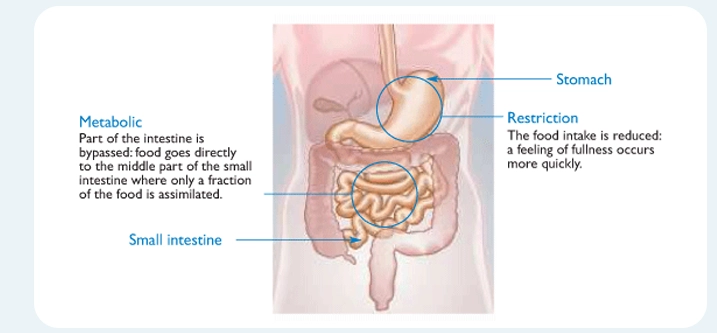
The surgical techniques at Auckland Weight Loss Surgery are
- One anastomosis (mini) gastric bypass
- Roux-en-Y gastric bypass
- Sleeve gastrectomy (gastric sleeve)
Each technique has its advantages and disadvantages, and a patient’s needs and risk factors may dictate a particular approach.
The operations reduce appetite and the amount that can be eaten. Eating is a soothing, enjoyable activity that everyone uses as a way of coping with stress and/or socialising with others. Weight loss surgery changes this permanently and the realisation that this coping mechanism may be removed can be a daunting prospect for anyone considering surgery.
Changing how you eat, how you exercise and how you deal with stress is vital to getting the best result from obesity surgery. A weight loss operation does not do it all for you; it is best seen as a tool that makes achieving this lifestyle change possible. The obligation is on each patient to make the best use of this tool.
Roux-en-Y gastric bypass
The Roux-en-Y gastric bypass procedure involves creating a very small pouch out of the stomach and attaching it directly to the small intestine, bypassing most of the stomach and the first part of the small bowel. This small stomach pouch cannot hold large amounts of food, and by skipping the first part of the small bowel, hormones that control our appetite and food absorption are also affected.
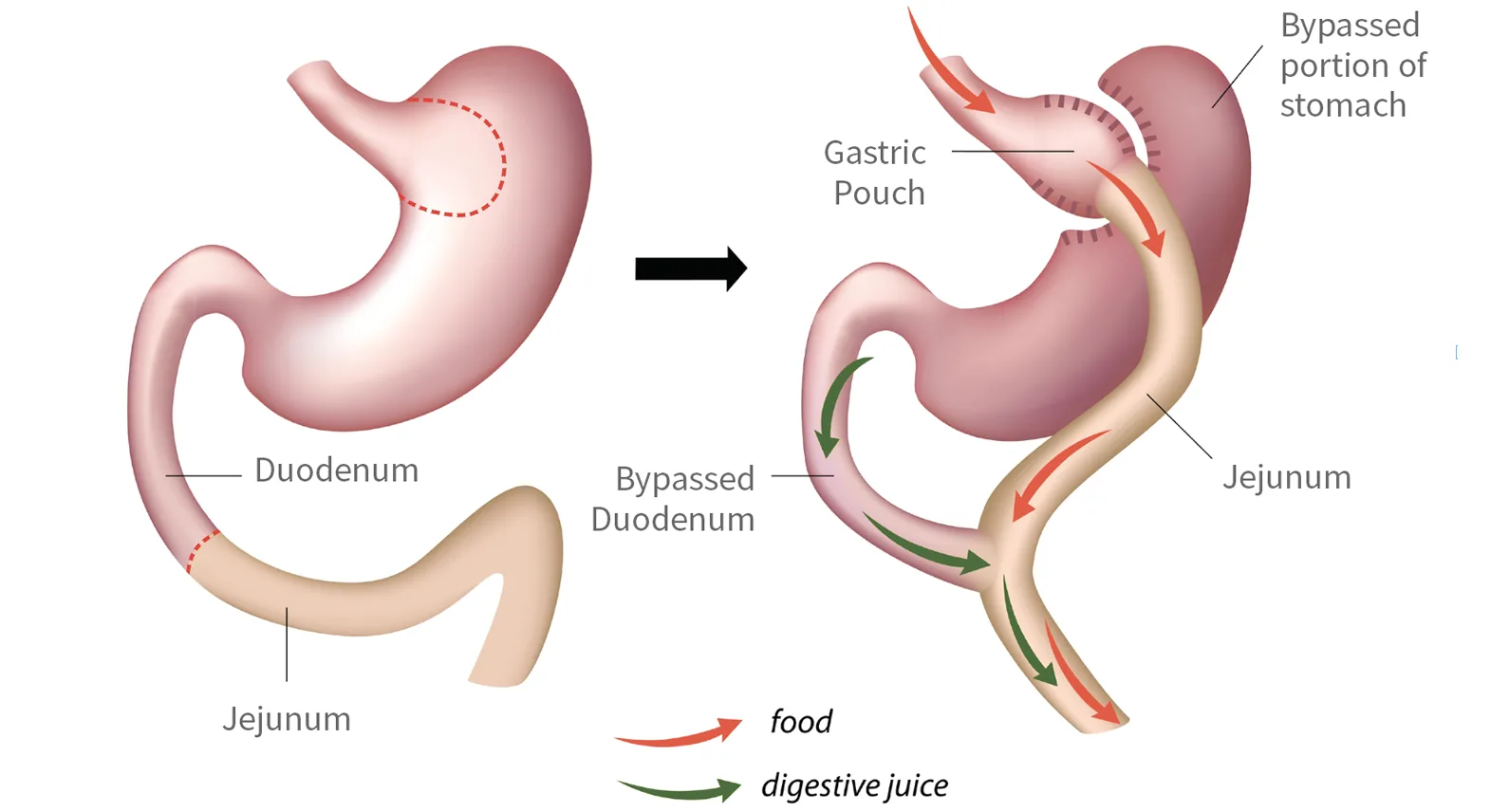
One anastomosis (mini) gastric bypass
A variation of gastric bypass with a longer pouch and a single join (anastomosis), bypassing more intestine. This combines good short term safety and excellent long term weight loss, but with some important longer term considerations.
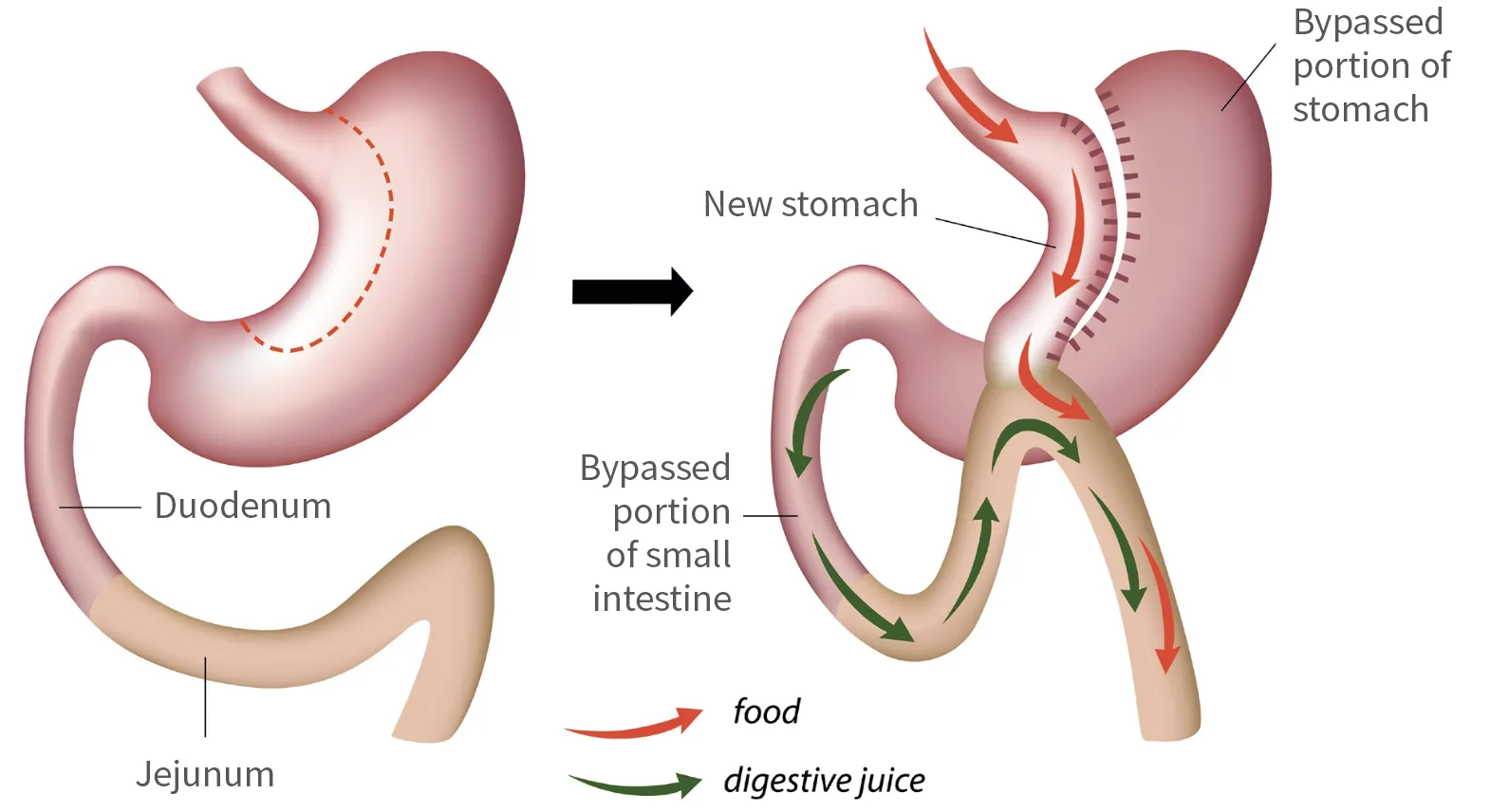
Gastric sleeve (gastrectomy)
Laparoscopic sleeve gastrectomy or gastric sleeve is a relatively new weight loss procedure that reduces the size of the stomach from a sac to a narrow tube. 80% of the stomach is removed, limiting the amount of food that can be taken and powerfully suppressing hunger. Weight is lost because of early satiety (the feeling of fullness after eating), largely due to the smaller size of the stomach. Also, some appetite stimulating hormones normally produced by the stomach are reduced by the procedure. Apart from this, the stomach digests calories and nutrients in an almost normal way.
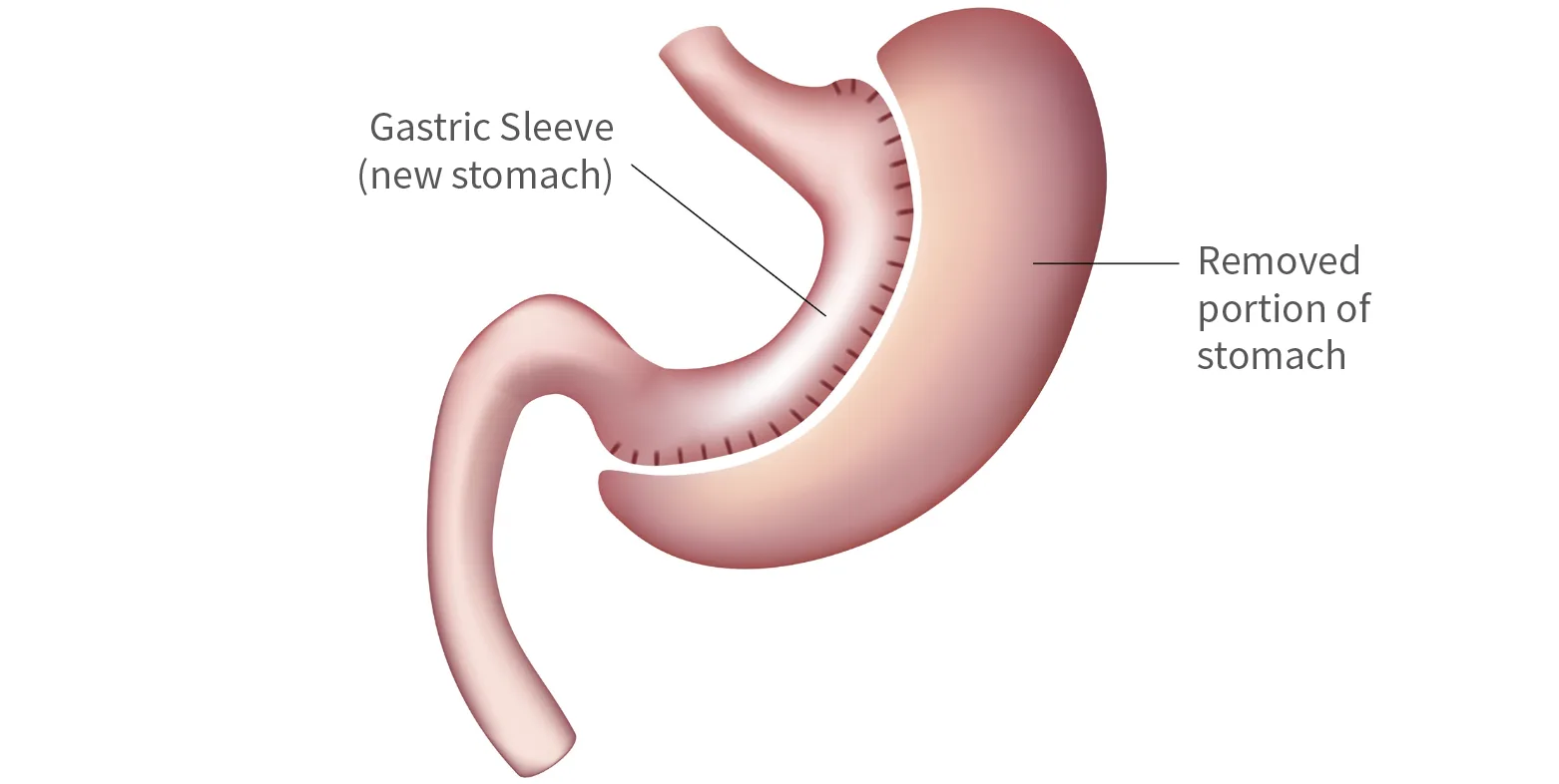
Gastric banding
Gastric banding involves placing an adjustable band at the upper part of the stomach. When working well, this may lessen feelings of hunger and allows people to feel full after eating only a small amount of food.
Although it is a common procedure overseas, gastric banding does not give the sustainable results of the gastric bypass or the sleeve gastrectomy. Its effect on medical problems associated with obesity is less pronounced than gastric bypass or sleeve gastrectomy, and there is concern internationally about a high late-complication rate.
For these reasons, Auckland Weight Loss Surgery no longer supports or recommends this operation.
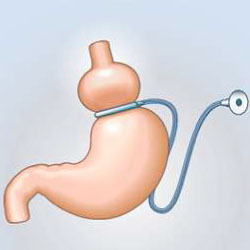
Stomach stapling
Vertical banded gastroplasty, also known as stomach stapling, was popular over 20 years ago but it has been largely abandoned by surgeons because of its poor results.
Auckland Weight Loss Surgery does not perform or recommend this operation.
Weight loss procedures are explained in detail in our private Patient Portal.
Ease pressure on your joints and reduce everyday aches and pains.

